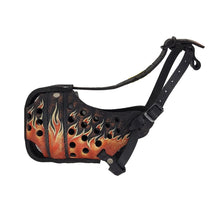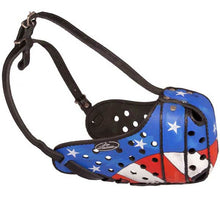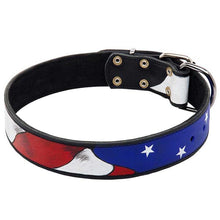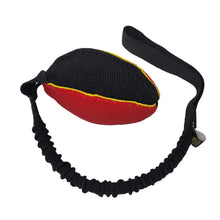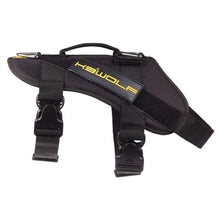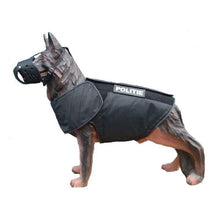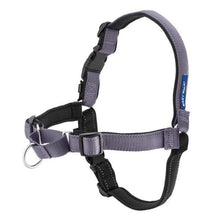How To Earn A Dog's Respect

Sometimes, especially with new adult rescue dogs, we get questions about dogs who are bullies. Dogs who will even threaten to use violence against their new handler for seemingly very little to no reason. This is quite a scary thing, and people often are clueless as to why it's happening. They will tell us how they feed, care for, and try to train the dog, but nothing is working. Let's dive into something that will work; earning your dog's respect.
The first step to earning respect is understanding that the pack behavior of a domestic dog is a very real thing, and very unlike a wolf's. The way that pack structure is built is probably the single biggest difference between dogs and wolves. A wolf pack consists of mom and dad and some pups who stick around. It's a loving hierarchy where respect is based upon relation and age.

Dogs, on the other hand, learn respect by being given boundaries and rules that must be enforced consistently. If the rules and boundaries aren't enforced consistently, they will be broken consistently.
The first part of putting those boundaries in place for an adult dog is isolation. Remember, we're focusing on adult rescues and adult dogs in this article. You wouldn't want to isolate a puppy, but an adult dog will be fine. We isolate the dog so that the dog understands it's in a new place, with new rules, and a new handler. Isolation may only be 3 or 4 days with a calm, stable dog. But it might be weeks or months with a handler hard dog (handler hard = a dog who will threaten, or even make good on threats to punish their handler with violence).

During this period of isolation, we're letting the dog get used to us. Push this stage at your peril. I've seen decent dogs who aren't tough at all who have bitten people who pushed their boundaries too much, too soon. You're thinking "What a handsome and wonderful dog" and they're thinking "Why is this stranger wrapping their arms around my neck? I need to defend myself." I've also seen some very severe damage when it comes to adult dogs who are handler hard, such as broken bones. Have you ever read a story about a dog that was adopted within the past 6 months mauling their owner? Yes, a very large percentage of the people reading this have adopted or have bought an adult dog before and didn't do this stage and were fine, and that's good. But I don't think anybody who has skipped this stage or pushed too much and ended up in the hospital will say it was worth the pain and medical bills.
Now, during this time of isolation, the dog goes 2 places, and two places only: his or her crate, and to the door to go outside to relieve themselves and exercise. Every single second they're out of the crate, they're on a leash. They're on a leash before they even get to leave the crate, and the only other interactions you have are to feed them and give them water.

You don't speak to them, you don't pet them, you don’t give them any commands, and for the love of yourself, don't put your face down in theirs, or try to kiss them, or hug them, or pick them up. All these things can be thought of as threatening by a dog who is fearful and could be thought of as a challenge by a dog who is handler hard. Both lead to conflict and I promise you you're not going to win a conflict with any dog over 60lbs: so, don't do it.
If your dog is what the average person would typically call "normal" (for example, not a fear-biter, not handler hard, etc.), this may only take a few days. After that, you can begin bringing the dog out, on a leash of course, when you do normal daily activities. If you're watching TV, they can sit or lay by you on the floor. If you're working on your computer, tether them to your desk. There is a lot they will learn during this time. Mainly, they'll learn that you are in control of everything that happens to them and in your presence. They don't get to run around in circles, chew up things, or wander into the back room to mark their territory. If your dog is a fear-biter or handler hard, you'll do this same step, only it may take much longer before you can trust them to "hang out" with you.

During this time, notice that I never mentioned rewards or corrections. Push formal training and, again, you open doors for conflict. A lot of people say positive-only training eliminates conflict in training. I guess they've never seen a dog bite someone to take their treat pouch, and if you have a dog that's handler hard, it isn't worth pushing the envelope.
Don't feel like this is wasted time though, because, without a reward or correction, your dog is learning who is in charge, what the rules are, how to behave in your home, etc. If they start to chew on something they shouldn't, you put them back in the crate. Do they aggressively bark at your spouse? Back in the crate. Do they start to pee on the floor? Outside, and then back in the crate. They are learning that you are fair, you are the boss, and that you don't suffer foolishness. They are learning to respect you.

After this phase is when you move on to positive training practices, and begin forming a deeper bond, the love will come. But far too many people skip the isolation phase and build the foundation of pack structure and end up with a dog that loves them... but doesn't respect them at all.
Note: If you're completely in over your head, don't get yourself hurt, it isn't worth it. Find a trainer who can work with the type of dog you have; muzzle train your dog and do whatever to keep yourself safe. Don't let inexperience or ego put you in the hospital. Your safety and the safety of your family are paramount.

If you learned anything or enjoyed this article, please leave a like, and most importantly, share. It's important and it can save someone a lot of pain and heartache. Thank you.
You might also like: 10 Items You Need To Train A Dog



